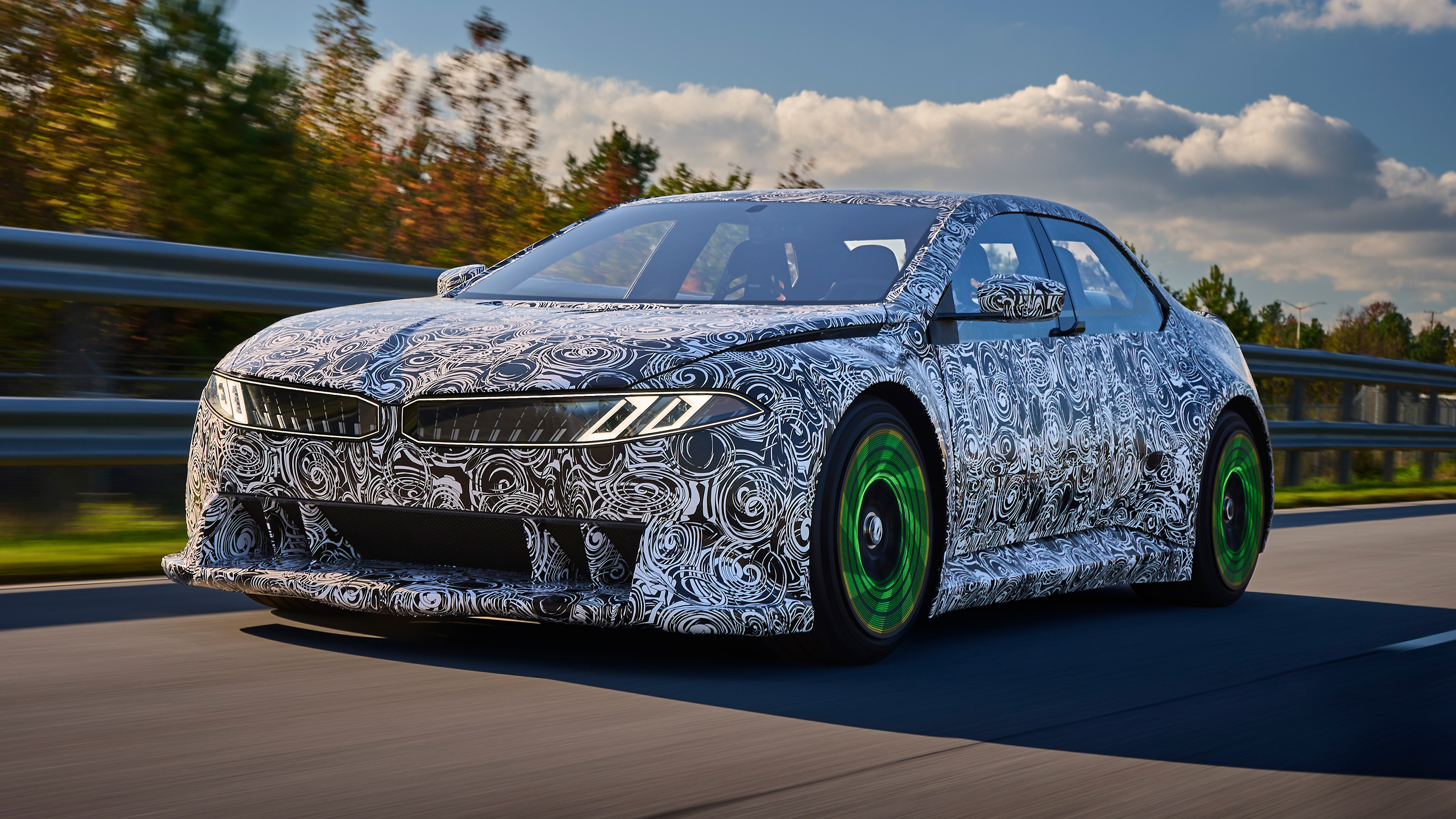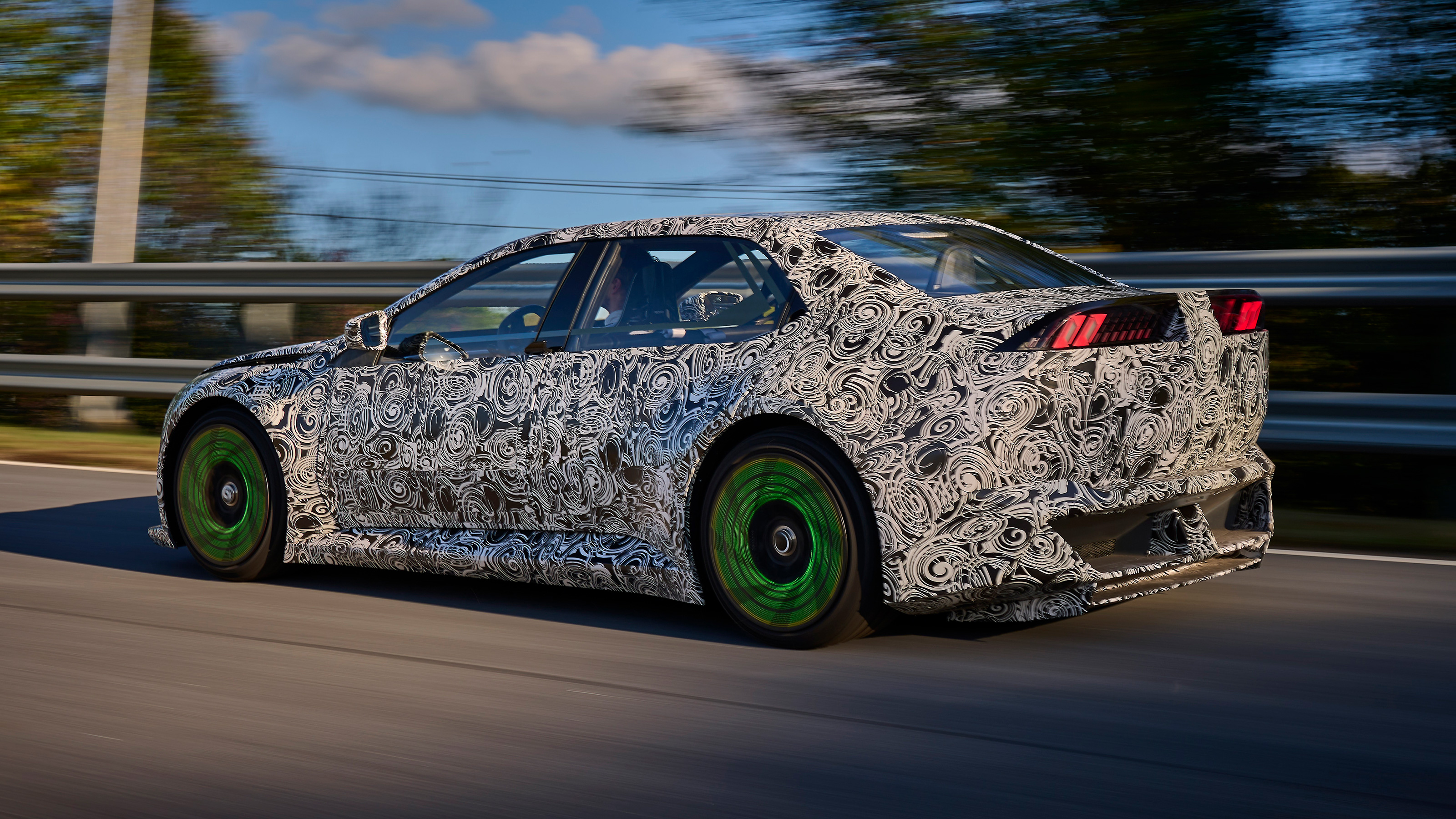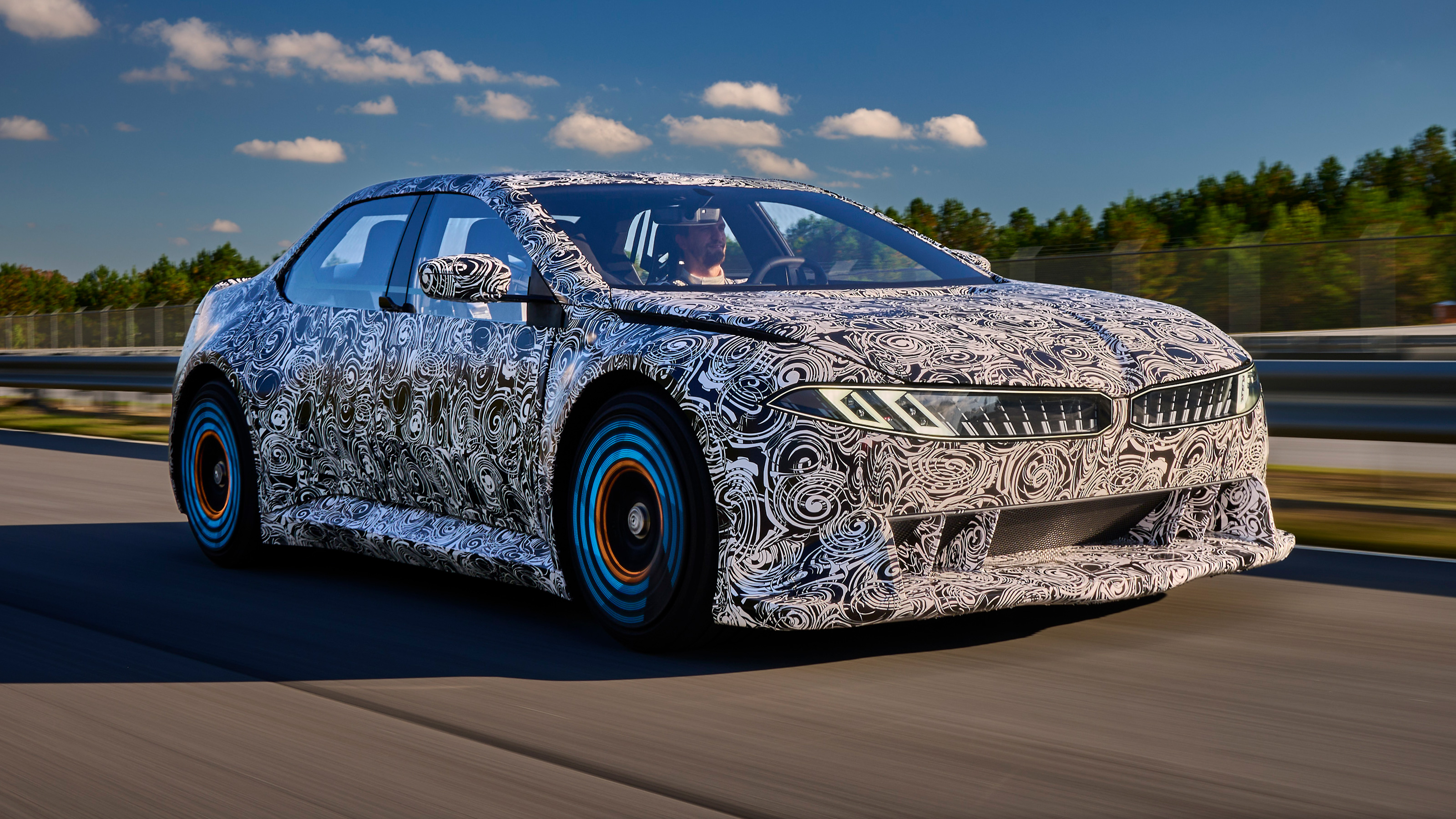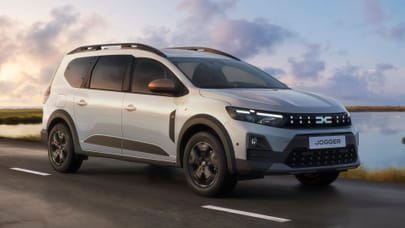
You’ve GOT to see this: meet BMW’s unhinged electric test rig…
… which generates *five times* more torque than a Koenigsegg Gemera. What?!
This, folks, is lunacy in the name of progress. Say wassup to the Vision Driving Experience, the insane electric test rig that BMW has built to push EV dynamics beyond all reasonable limits and into hitherto undiscovered dimensions.
“Hang on!” we hear you cry. “This looks like a development mule destined for the crusher, what am I missing?” 13,269lb ft of torque, that’s what you’re missing. More than five times as much as you get out of a Koenigsegg Gemera; to our knowledge the production record-holder for mechanical grunt by quite some distance. Holy moly.
The VDX… isn’t going into production. Ever. But it will put its stamp on cars that do, specifically BMW’s next generation of Neue Klasse vehicles, the first of which we’ll see later this year. Then eventually... quad-motor M cars.
The thinking goes that if the ‘system can deal with an explosion of power of this magnitude, it will be able to handle the demands of everyday driving with ease’. That’s like training for an Ironman to make climbing the stairs less of an effort.
Anyhow, the VDX is so deep into experimental territory that BMW would rather not tell us much about it. So stuff like battery make-up, power and performance is all locked in a box marked ‘none of your beeswax’.
We do know it’s built upon a carbon chassis. And that there are modes, including Drift (entirely believable) and Comfort (less so). Track mode engages five impellers; basically fans that suck the thing to the floor to simulate masses of downforce. Don’t get excited though, BMW isn’t following Gordon Murray and the T.50 down that path for production.
“The fastest test rig in the world,” says Christian Thalmeier, BMW’s Heart of Joy expert (we’ll come to that job title shortly). “It’s a beast.”
The LEDs on the hubs are there to tell engineers – presumably all watching from a deep-set concrete bunker – what the car is up to. Green means acceleration, blue means regen, orange means the friction brakes have woken up. Apparently the brake heat got so intense at one stage, it killed the batteries.
This is a key point though: BMW wants its Neue Klasse cars to stop almost exclusively via recuperation power, relying on regen basically until the ABS kicks in. Strewth. It claims its rear-wheel drive cars will harvest 60 per cent more regenerative force than its, er, Klasse of 2021 EVs, while AWD cars gain 40 per cent.
You can’t get rid of discs and pads entirely, mind: imagine starting a journey at altitude with a full charge, the energy you’d pick up hurtling downhill would have nowhere to go. Still, the pads will be programmed to engage occasionally (brake by wire, innit?) to prevent corrosion: BMW has noted issues with owners who drive everywhere slowly in B-mode…
Top Gear
Newsletter
Thank you for subscribing to our newsletter. Look out for your regular round-up of news, reviews and offers in your inbox.
Get all the latest news, reviews and exclusives, direct to your inbox.
Anyhow, the result is a modest efficiency boost equating to about nine miles of range, but it could allow BMW to virtually eliminate brake noise. The “smoothest stopping since the invention of the wheel,” reckons Thalmeier.
Right, Heart of Joy. Was ist das? Another thing trialled in the VDX is that the drivetrain and driving dynamics are marshalled by the same control unit, something BMW claims it’s the first in the world to accomplish. Several patents are pending. The size of a DVD player (remember them?), it’s capable of handling up to four electric motors and it’ll be present in every Neue Klasse car. Thalmeier says: “We treat it like a heart because it makes the car alive.” His one-line game is strong, isn’t it?
Developed entirely in-house over three years, the Heart of Joy is responsible for acceleration, braking, stability and dynamic steering and charging management. It operates at 1kHz – 10 times faster than old-gen BMWs – and response times are ‘in the millisecond range’. Rear bias will be a recurring theme, with braking varied by axle (or even wheel) to aid cornering. High stability, high agility. You don’t need us to explain what that could mean for the pulse rate of the squidgy organ sat behind the wheel.
Thalmeier readily admits that heaviness in electric cars is “not good”, but is adamant BMW can make its EVs feel “more light-footed” and shield drivers from the hard realities of physics. “The weight is lower. The centre of gravity is lower. And because of this big battery pack, it's a very centred mass. So from the point of agility, this is really good.
“It is responsiveness, how the car reacts. For me personally, it is still the feeling. The car moves, the car is precise, I feel the forces to my body, yeah? This is what driving pleasure is. Everything works together... I’m getting into a flow, and the car supports me.
“People who say ‘Well, I don't like it at all, because I don't hear anything’ – you can get used to [it]. To drive an eight-cylinder for example, it's really nice. But to drive other [electric] cars… it's the same joy for me.”
Give us 13,269lb ft to play with and we’d be inclined to agree. In a heartbeat.
Trending this week
- Car Review
BMW iX3










